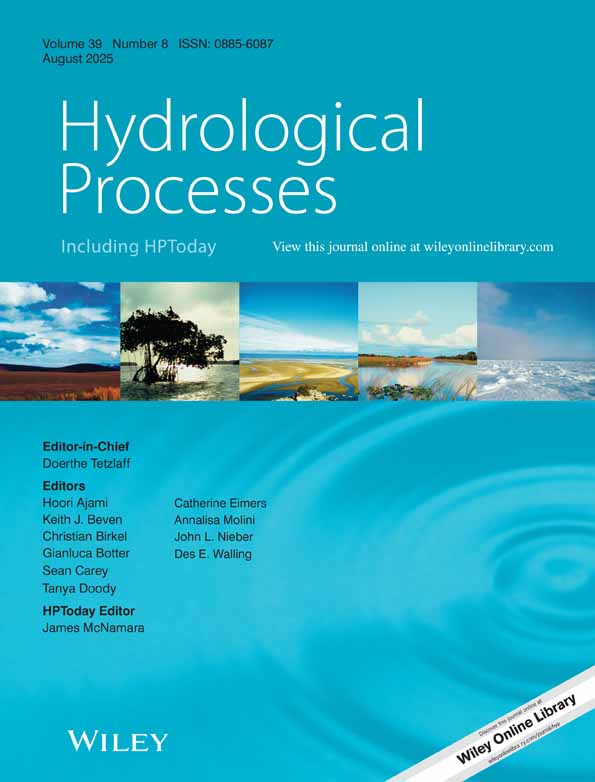Scaling hydraulic properties of forest soils
Abstract
For the purpose of characterizing spatial variability of soil hydraulic properties on a forested hillslope, five differing scaling methods were examined using the data set for 30 undisturbed forest soils: scaling of water retention curves, scaling of hydraulic conductivity curves, and simultaneous scaling of both water retention and conductivity curves. For the scaling of conductivity curves and the simultaneous scaling, the soil-pore-tortuosity parameter in a conductivity model was either fixed at a constant or treated as a fitted parameter. Results showed that the set of scaling factors and reference parameters derived by the separate scaling of water retention curves was different from that derived by the separate scaling of conductivity curves. Moreover, the separate scaling methods resulted in large estimation errors in either effective saturation or conductivity. Optimizing the tortuosity parameter was effective in improving scaling results. It was concluded that the simultaneous scaling with a fitted pore-tortuosity parameter was the best among the five methods tested in this study. The obtained scaling factors obeyed the lognormal distribution rather than the normal distribution. The variance of log-transformed scaling factors at the forested hillslope was larger than those at many crop fields studied by previous studies. While a spatial dependence of soil hydraulic properties was suggested for the surface layer of the forested hillslope, hydraulic properties of the subsurface layer exhibited large variations even in a small distance. Copyright © 2000 John Wiley & Sons, Ltd.




